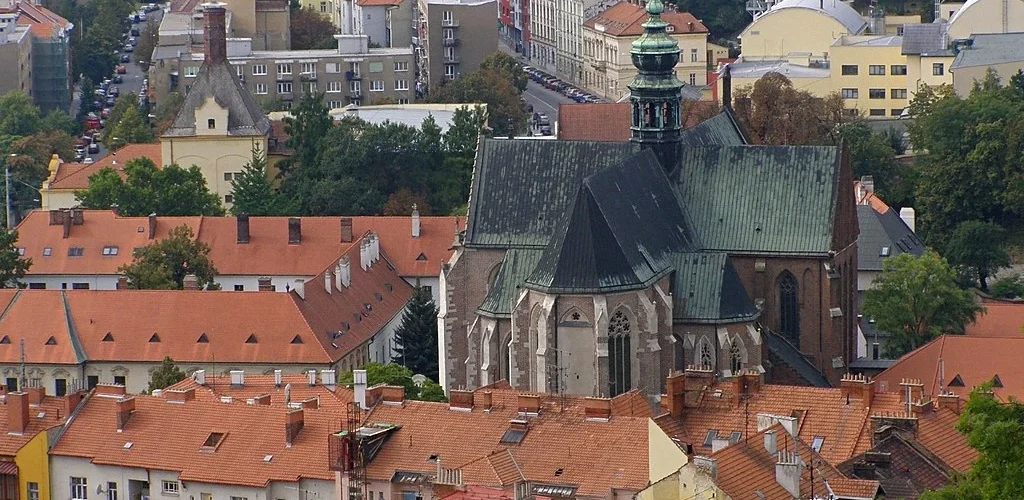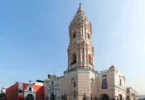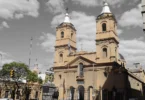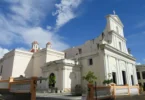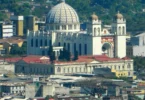Introduction
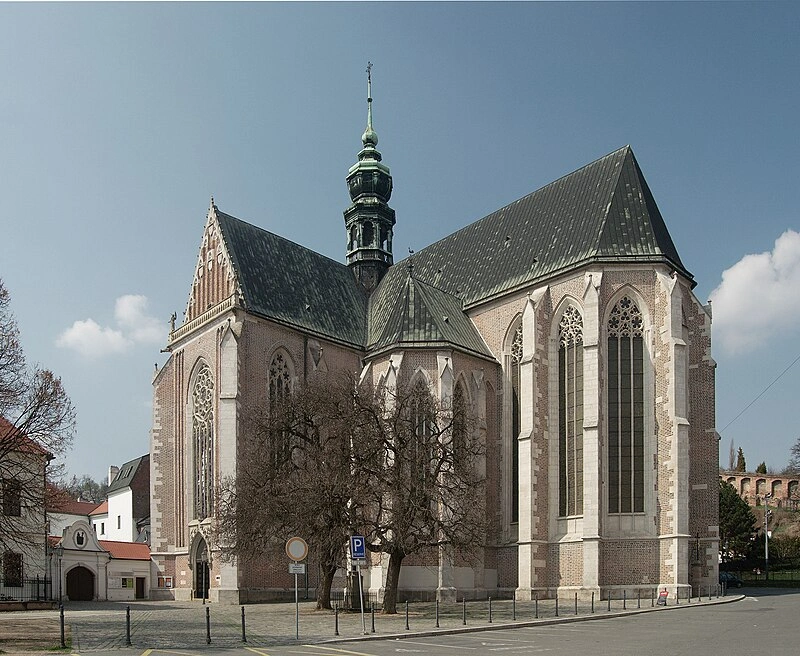
This massive Gothic church in Brno is known as the Basilica of the Assumption of Our Lady, or Bazilika Nanebevzet Panny Marie in Czech. It is located within the Old Brno Abbey. The place looks pretty grand and definitely old-school. People say it was first founded somewhere around the year 980 to 1020, but no one really knows by who probably some local ruler or noble back in the day. What’s standing there now was built pretty fast between 1323 and 1334, thanks to Queen Eliska Rejcka (also called Elizabeth Richeza). She had it built over an older sanctuary that was already there from the 10th century. It’s actually one of the best-preserved Gothic churches in the whole region like, it still has that full-on Gothic vibe, really clean and consistent in style. You’ll find it in the Staré Brno district, right on Mendl Square. It’s part of a bigger monastery complex, and the whole thing’s protected as a cultural monument. Then in November 2022, it was officially declared a national cultural monument that kicked in from July 1, 2023. The church itself goes back to the first half of the 1300s. During that time, Queen Elika, who was married to two Czech kings, Wenceslas II and Rudolf of Habsburg, commissioned the construction of a brand-new Gothic church as part of a Cistercian monastery. She had it laid out in a cross shape, pretty common back then. They buried her right under the altar of the Holy Cross when she died in 1335. During one of his major reforms, Emperor Joseph II closed the Cistercian convent in 1782. The Augustinians then moved in and took over the property. In the 1700s, they gave the church a bit of a Baroque update nothing major, just a few tweaks. Then way later, in 1987, Pope John Paul II gave it the title of a minor basilica kind of a special recognition in the Catholic Church.
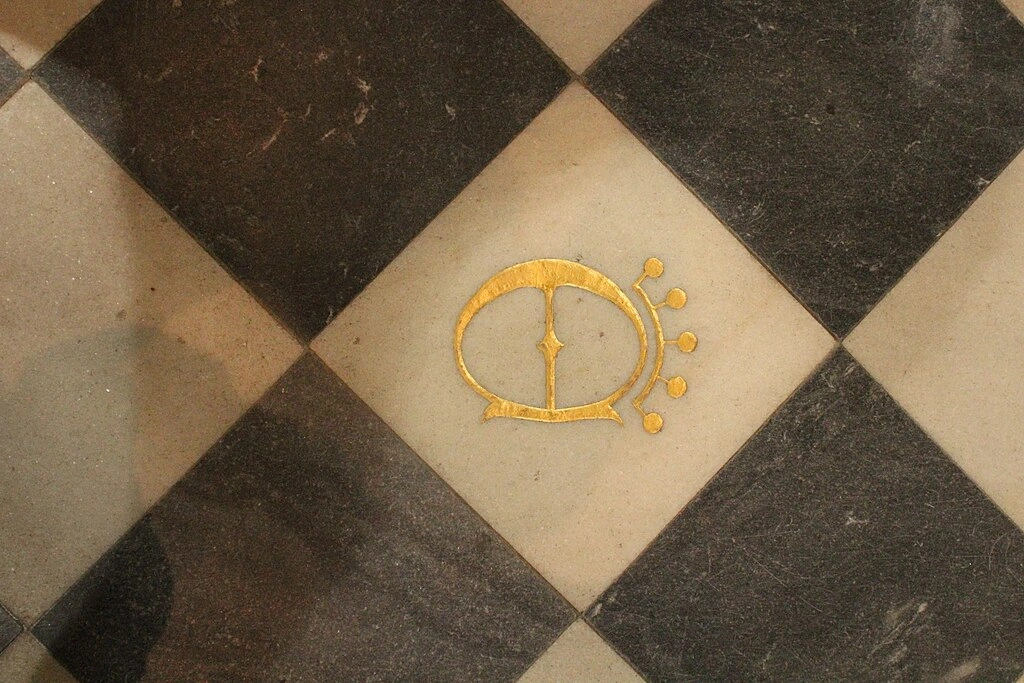
This church lives up to its reputation as a genuine Gothic treasure of the Bohemian lands. Back in 1323, Queen Elizabeth Richeza (she was widowed twice hence the “double queen” nickname) set up a Cistercian convent next to what was the oldest parish church of Our Lady in Old Brno. The Latin name for the convent was Aulae Sanctae Mariae. When Elizabeth died in 1335, she was buried inside the basilica. You can still find the exact spot it’s marked with a simple “E” and a little crown carved into the stone floor. The church’s interior received a little Baroque makeover in the 1700s. Around that time, the rest of the abbey buildings were also finished in the Baroque style. After that, in 1783, Emperor Joseph II arrived with his reforms and closed the establishment. The Cistercian convent was dissolved, and the Augustinians were moved in from their old monastery at St. Thomas which used to be just outside the old Behounska Gate, near what we now call Moravske namestí. The Augustinians didn’t come empty-handed either. They brought with them a beautiful silver altar from Augsburg done in baldachin style that had been made for the crowning of the Black Madonna icon in 1736. Every year, on August 15th, the basilica holds a pilgrimage for the Feast of the Assumption of Our Lady. It’s still a big deal because she is seen as Brno’s protector. Later, in 1987, Pope John Paul II bestowed the church with the title of Basilica Minor, which is considered to be a significant honor within the Catholic Church.
Church Founding
There’s a legend tied to how the church ended up where it is kind of a cool old Brno story. Queen Eliška Rejčka was living out her later years up at Špilberk Castle. She wanted to build a monastery and church but didn’t know exactly where. So she threw three flags out of the Hungry Tower and decided she’d build wherever the first one landed. The first flag landed in Old Brno, right at the foot of the castle and that’s where she built the new monastery for the Cistercians.The second flag? Nobody knows. It is said that the wind carried it away from Veve and never found it.The third one? No mention. But Old Brno got the church.
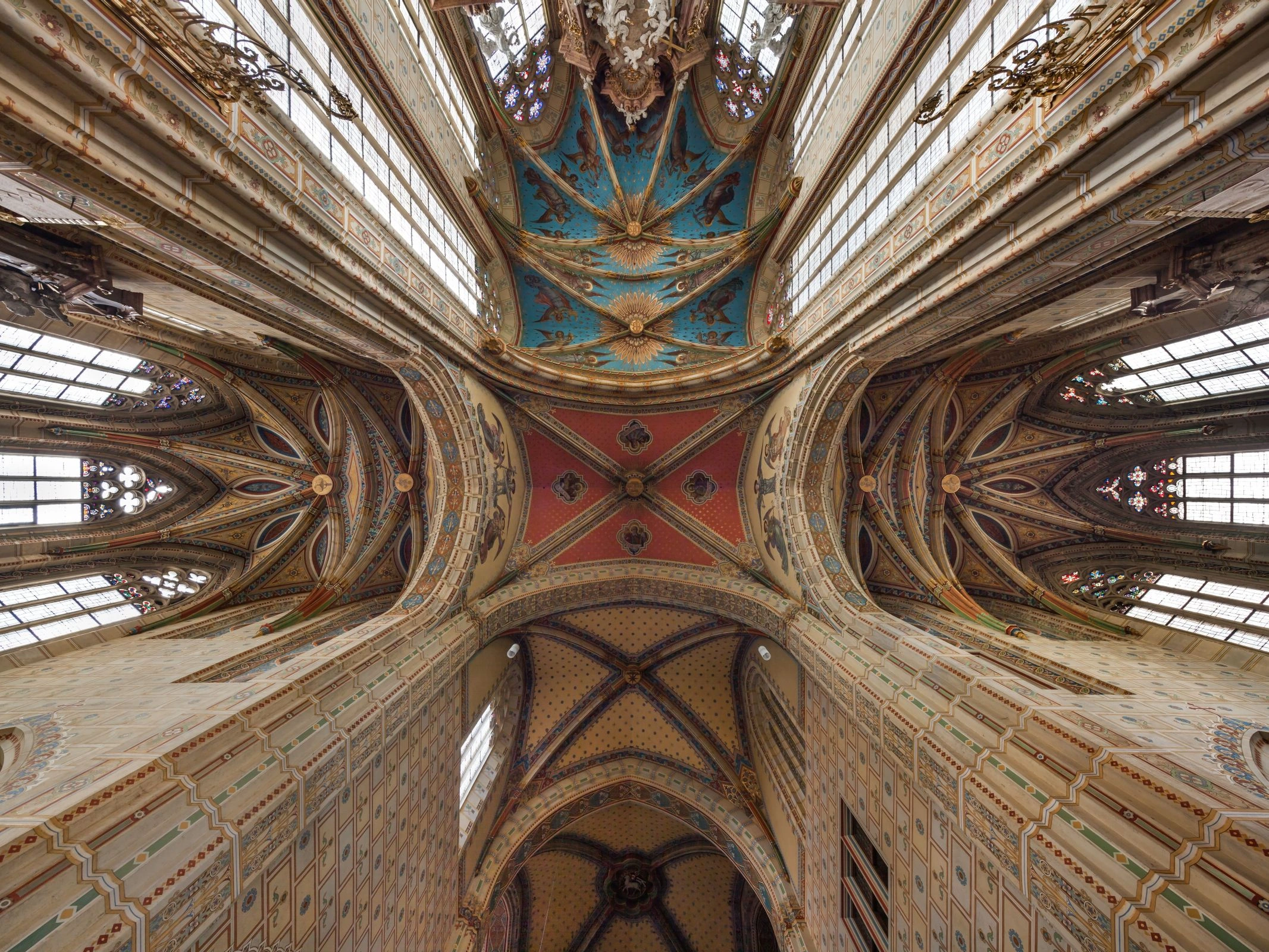
Building
The new church was built right next to the old, smaller parish church of the Virgin Mary. Architecturally, it’s not one clean, uniform piece it shows its history and changes over time. It’s a full Gothic church, built mostly from red bricks without any plaster. Stone was used only in a few spots which is kind of unusual for Gothic churches. Other brick Gothic structures in cities like Cologne, Hesse, or Silesia probably served as inspiration for it. In fact, Queen Eliška had another church the Cathedral of the Holy Spirit in Hradec Králové built in a similar way. The layout is what makes it interesting. The whole thing is shaped like a cross, with two main parts intersecting in the middle. That’s pretty classic Gothic. Later, in the Baroque era, the famous architect Moritz (Maurice) Grimm added some changes to the inside mainly the altar and pulpit, which were done by Brno sculptor Ondřej Schweigl. Overall, the church still has a very Gothic appearance despite those updates. Inside, after a big restoration in 2000, you can see lots of colorfully painted walls and murals of saints. The building ends on the east side with a trefoil-shaped apse each part is kind of pentagon-shaped. In the west, it leads into a single vaulted bay that’s the same height. The north and south arms of the apse are smaller and lower than the eastern presbytery. The overall layout is a short basilica with three aisles. It’s kind of squeezed between the eastern apse and a large, standout transept (that’s the part that sticks out and forms the cross). The side arms each have two rectangular bays, and the central space is square. There’s also a big gallery for the nuns in the west part of the nave. You can really see how the building grew over time when you look at the pillars and the windows they don’t all match, which tells you the work happened in stages. On the north side, the convent buildings were laid out around what’s called the “paradise courtyard” kind of a peaceful garden space in the middle. Later, in the early 1700s, Maurice Grimm added more Baroque style to the monastery complex. However, the Cistercian order was dissolved by Joseph II in 1782, and the Augustinians from the Church of St. Thomas in the city center. They’ve been here ever since.
Architecture of Basilica of the Assumption of the Virgin Mary, Brno, Czechia
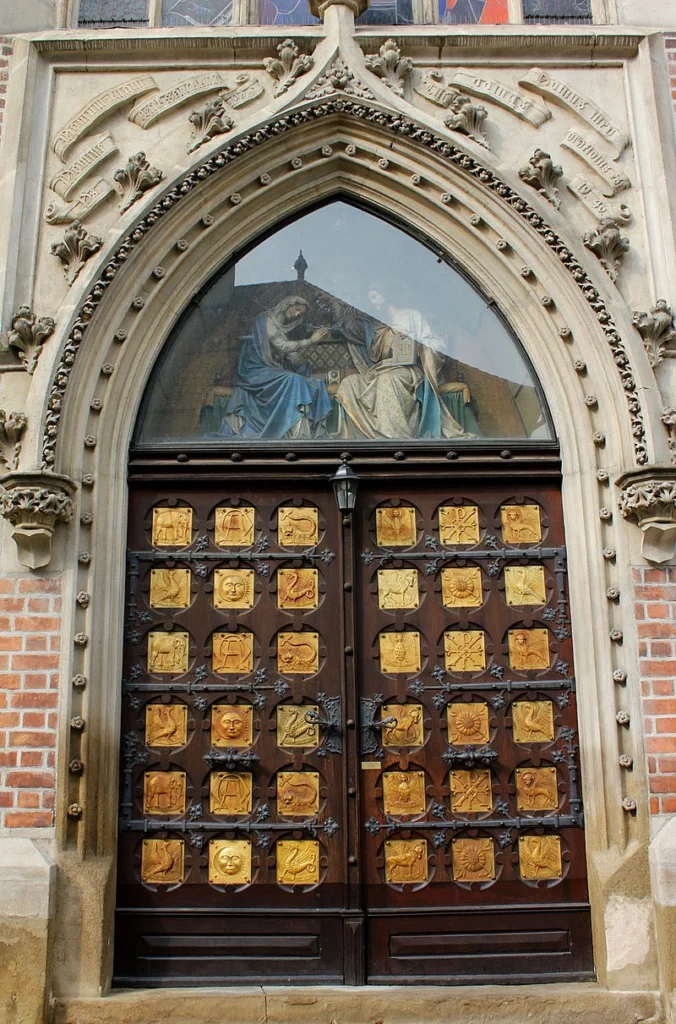
Architectural style: High Gothic architecture
The church follows typical Cistercian design it’s built in the Gothic style and has that classic cross-shaped layout: a main nave, two side aisles, and a transept that cuts across. The ceilings are high more than 22 meters with ribbed vaulting across both the nave and the transept. The choir section is in three parts: the main one in the east, and two side chapels that continue the cross shape. There’s a massive arch that separates the central part of the church from the nave, and the whole structure has 34 large tracery windows most are grouped in threes. Nine of them have pointed (lancet) arches, and 14 of them have an equilateral arch in the Gothic style that is more balanced. The basilica was the first Gothic structure constructed entirely of brick in this region and was constructed using a method known as “Flemish bond.” Stone was only used where it was needed, like in the arches, corners, window details, and water runoff features. Most of the stone came from a nearby quarry at Stránská skála it’s a local crinoid limestone. Size-wise, the inside of the church is about 67.5 meters long and almost 28.5 meters wide. At their highest point, the ceilings reached just over 23 meters. Like other Cistercian churches, it doesn’t have a big tower just one small spire at the crossing where the nave and transept meet. The south arm of the transept is now used as an entrance.
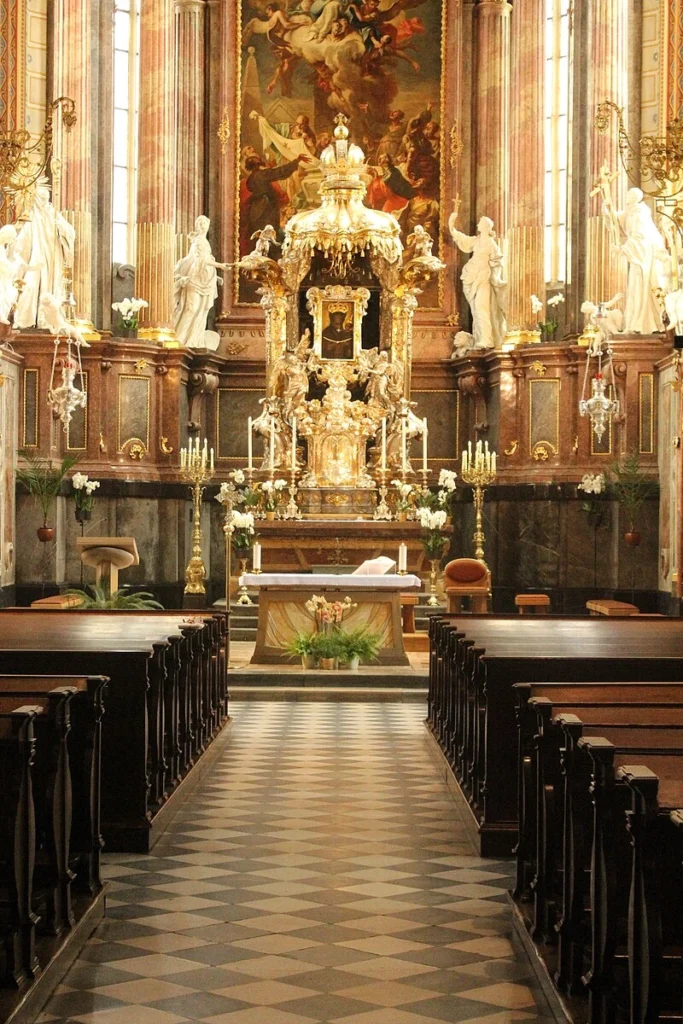
Interior
The inside is mostly made up of cross vaulting, found in both the main nave and the transept. These vaults end in decorative stone consoles. The ceiling designs change a bit depending on which part you’re in, but the most eye-catching one is in the presbytery (the area near the altar). It has a radial vault with round stone “studs,” and painted across the ceiling is this dreamlike sky full of golden suns in Art Nouveau style, with angels flying around them. The interior was redone in Baroque style during the 1700s. Around that time, the abbey buildings were also added to the complex. Then between 1898 and 1903, the church got another makeover this time in the Art Nouveau style. They painted the walls, but humidity and time did their damage. So far, only some areas have been fully restored mainly the presbytery, the main nave, and the side choir. The basilica also had some restoration work done throughout the 20th century.
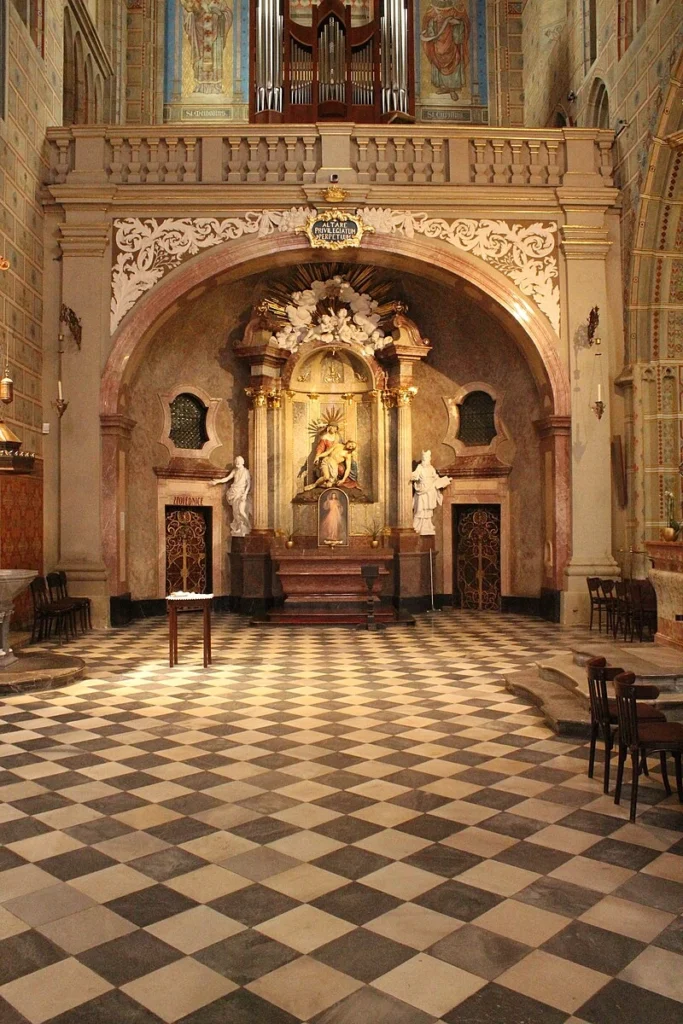
Basilica Facilities
One of the biggest treasures inside is the silver altar made by Johann Georg Herkommer from Augsburg. Prior Ondej Zirkl of the Augustinian monastery commissioned it for the Black Madonna icon’s coronation in 1736. Originally, this altar was placed in the Marian Chapel at the Church of St. Thomas in Brno. But when the Augustinians were moved to the Old Brno Abbey in 1783, they brought the altar with them and set it up in the basilica. The altar is considered one of the finest silversmith works in all of Moravia. It’s been moved four times over the centuries, which has changed some parts of its design. Some elements are made from gilded copper and silver sheets. They’ve restored the golden canopy and the imperial crown, and added back missing details like silver acanthus leaves and mother-of-pearl inlays. Another thing that really stands out inside is a massive, brass seven-branched candlestick from the 15th century. It’s heavy, old, and still impressive.
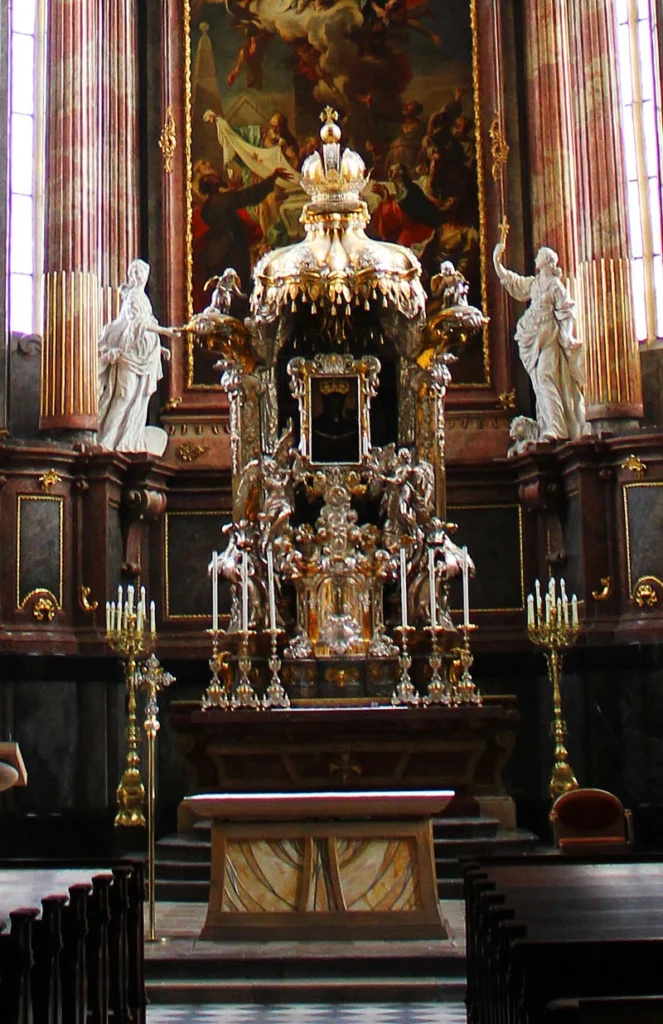
The Black Madonna
The painting of the Black Madonna has a special place in Brno’s story. It was brought here in 1356 by King Charles IV as a gift to the Augustinians when they were setting up their monastery and church at St. Thomas (on what’s now Moravské náměstí). Legend says the Madonna brought blessings and prosperity to Brno. During the Swedish siege in 1645, people claimed she appeared above the city, spreading her cloak to protect it. That gave the people courage, and somehow they managed to hold off the siege. Later, during the Prussian-Saxon pressure, similar stories came up which is why the Black Madonna became known as the city’s protector, its Palladium. When Emperor Joseph II shut down the Augustinians’ original monastery in 1783, he allowed them to move and they took the painting with them to their new home in Old Brno.
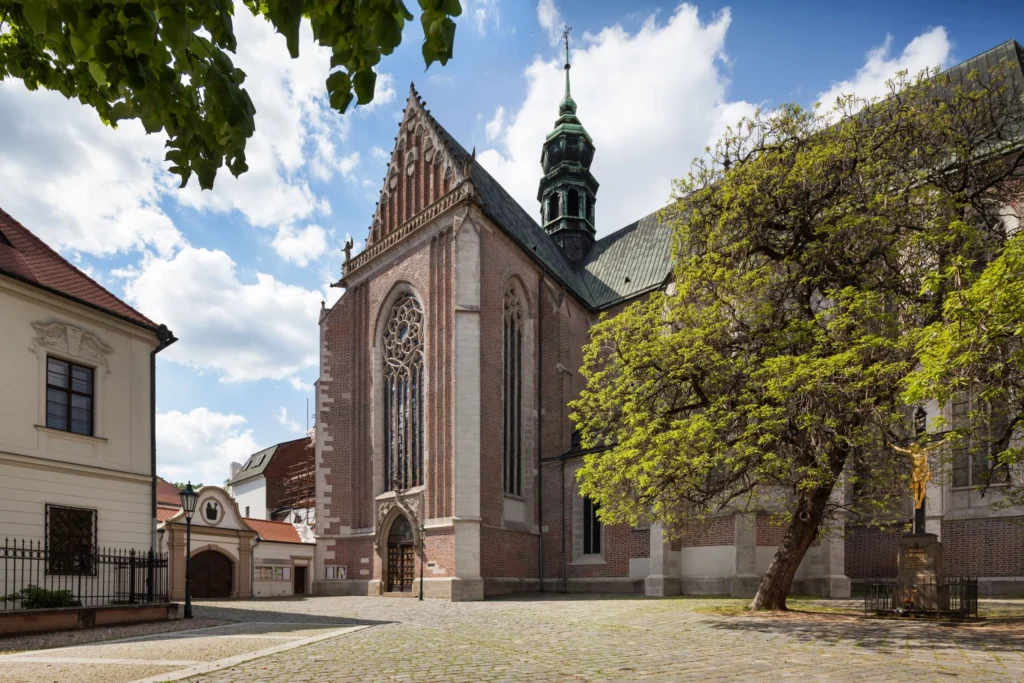
Exterior
The basilica stands out from Mendl Square. One main nave, two transepts, and a polygonal Baroque bell tower over the crossing make up the intricate layout of the church. The front entrance, with its pointed Gothic arch, wasn’t finished until the Gothic Revival era. Around the arch, you’ll see carved floral details acanthus leaves and decorative “crabs,” a type of Gothic ornament. Gold panels on the door show animal and plant designs. There are lots of different window tracery styles around the basilica, mostly because it was built over time. A five-leaf clover pattern inside a circle with a central trefoil in a triangle can be found on the east side. The windows of smaller chapels are taller and narrower. The tracery depicts four-leaf shapes and a seven-pointed flower above the main entrance. Above the entrance on the south side, there is a triangular pediment with four coats of arms that demonstrate Queen Eliska Rejka’s connection to Poland, Bohemia, Moravia, and Carinthia. A trefoil that forms a spherical triangle above each one, and crabs line the entire pediment’s edges. Large stepped buttresses run along the outside walls of the church. They have tiny ornaments that look like flowers on top, which give the structure, despite its size, the appearance of being delicate. In 2013, local artists made a fun sculpture called Pulihrášek it’s in the green space near the basilica. It’s shaped like a pea and made from old Brno beer cans, as a tribute to Gregor Mendel, who used to be abbot here and studied genetics using pea plants.
Burials in the Basilica
Here, two significant individuals are buried: Eliška Rejčka – The queen who founded the church and the Cistercian convent. She’s buried right inside the basilica, under the altar. Her resting place is marked with the letter “E” and a small crown. Henry of Lipá – A Moravian nobleman and one of the most powerful men in Bohemia during the early 14th century. He’s buried here too.
Feast Day
Feast Day : 15 August
The feast day of the Basilica of the Assumption of the Virgin Mary in Brno, Czechia is celebrated on August 15. This date marks the Feast of the Assumption of the Virgin Mary, which honors the belief that the Virgin Mary was taken into Heaven, body and soul.
Church Mass Timing
Sunday : 12:15 PM
Church Opening Time:
Monday : Closed
Tuesday to Saturday : 2:00 pm – 6:45 pm
Sunday : 7:00 am – 12:15 pm
Contact Info
Address : Basilica of the Assumption of Our Lady, Brno
Mendlovo nám. 1b, 603 00 Brno-střed, Czechia
Phone : +420 543 424 010
Accommodations
Connectivities
Airway
Basilica of the Assumption of the Virgin Mary, Brno, Czechia, to Brno–Tuřany Airport, distance 18 min (13.5 km) via D1/E50.
Railway
Basilica of the Assumption of the Virgin Mary, Brno, Czechia, to Main Railway Station Nádražní, distance between 8 min (2.0 km) via Hybešova.

